
7 Essential Design Tips From Los Angeles’s Top House Flipper
It’s time for the ‘slow flip’ movement, where eyesore zombie houses are carefully and lovingly redesigned before they hit the housing market.
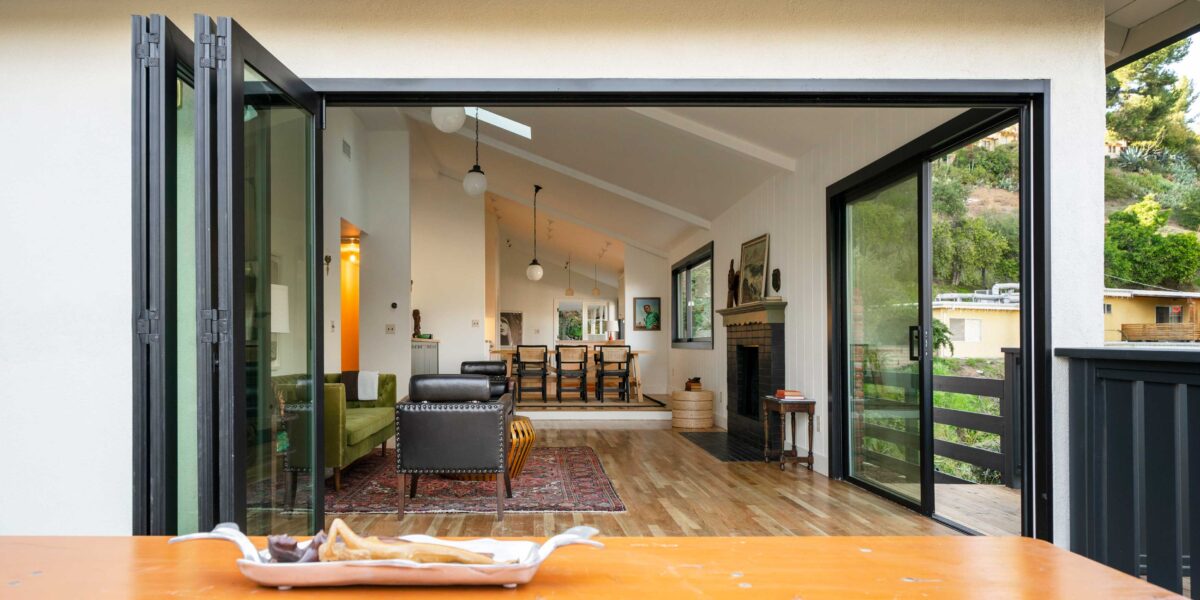
I remember the first time I saw a home that was “flipped” by developer Steve Jones of bettershelter. I was taking my dog for a walk, and I saw a home that, until recently, had been the ultimate zombie house—a house that’s vacant and has deteriorated to the point where it seems beyond saving. This was a shame. As a resident of the area, I knew that most of the homes were built in the 1920s and therefore worth restoration.

Gavin Cater
And then, a miracle happened: Where once zombies roamed, there was now a charming Craftsman bungalow that fit in perfectly with the surrounding neighborhood. Thoughtful details abounded—a stained-glass crest had been placed in a front window, a hand-painted address sign hung nearby, custom gates were added to the driveway, and a light hanging over the front door seemed like it could be original. Clearly, whoever redeveloped this home knew what they were doing.
The wizard behind period-detail light fixtures was Steve Jones, owner of bettershelter, which uses elements of restoration, sustainable construction, and Jones’s own eclectic taste to create inspirational one-of-a-kind homes, usually located in Los Angeles’s East Side.
Of course, the bar to out-design other developers is set woefully low. Here’s how it usually goes: A developer buys a home that’s in serious disrepair and below market value and does a hasty job “fixing it up” for future potential buyers. Often, the new homeowner will later find cut corners like shoddy construction or leaky plumbing, along with cookie-cutter design details. (Lately, the look is an open floor plan—whether the house would benefit from one or not—with gray floor planks, lots of flush mount lights, and less personality than a big box store.)

Gavin Cater
“Most times, when people think of a flipped home, they think of something that was done quickly and cheaply,” Jones says. “Mine are more thoughtful, the budgets are higher, and I try to think of who the buyers are gonna be—a family, a young couple, or a single person? I try to think of what would be most important to them.”
In other words, Jones thinks of bettershelter homes as “slow flips”—a term he coined after being inspired by the slow food movement. The idea is to take one’s time when it comes to a redesign and even mask how much work has been done in the house, so there is a seamless transition from what it was back then to what it is now.
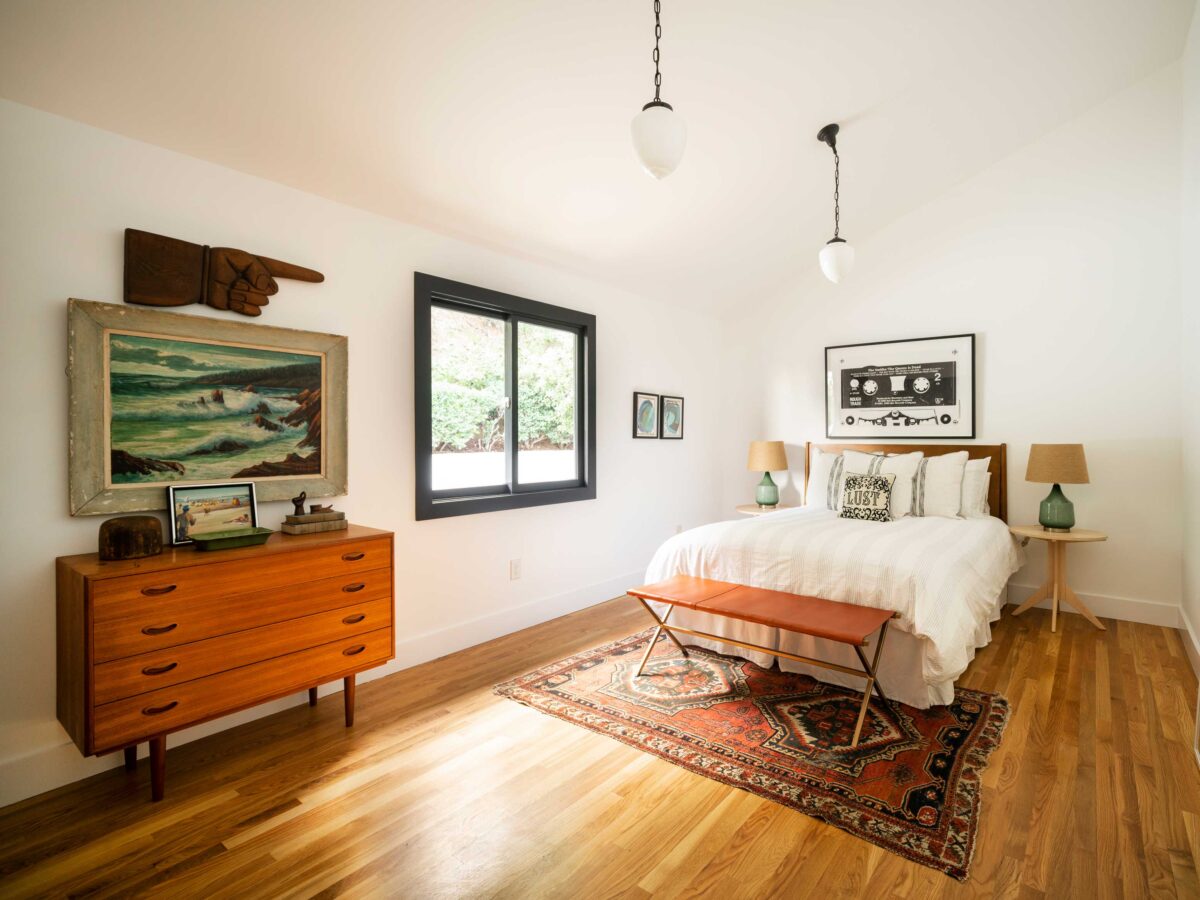
Gavin Cater
“I want someone to feel like the homes weren’t really renovated; they were gently cared for,” Jones says. “Oftentimes I’ll be in a house I just did, and people will point to a light fixture and say, ‘Oh, that’s original.’ And I’m like, ‘No, it’s not.’ They’ll say, ‘Well, the flooring is.’ ‘No, it’s not.’ If people ask me that question enough times, then I’ll know I’ve done my job.” Namely, he’s created a home that blends in with the neighborhood, with quality construction and details that will withstand the test of time. “I’m not going for these quick design tricks,” he says, quoting fashion icon Karl Lagerfeld, who once famously said, “Trendy is the last stage before tacky.”
What I’ve come to love about bettershelter homes—and since that first encounter, I’ve seen many—is that they are chock-a-block with good ideas that anyone can use. (To see what I mean, check out Jones’s Instagram.)
Here Are Jones’s Slow-Flip Strategies
1. Use Materials That Read as Historical
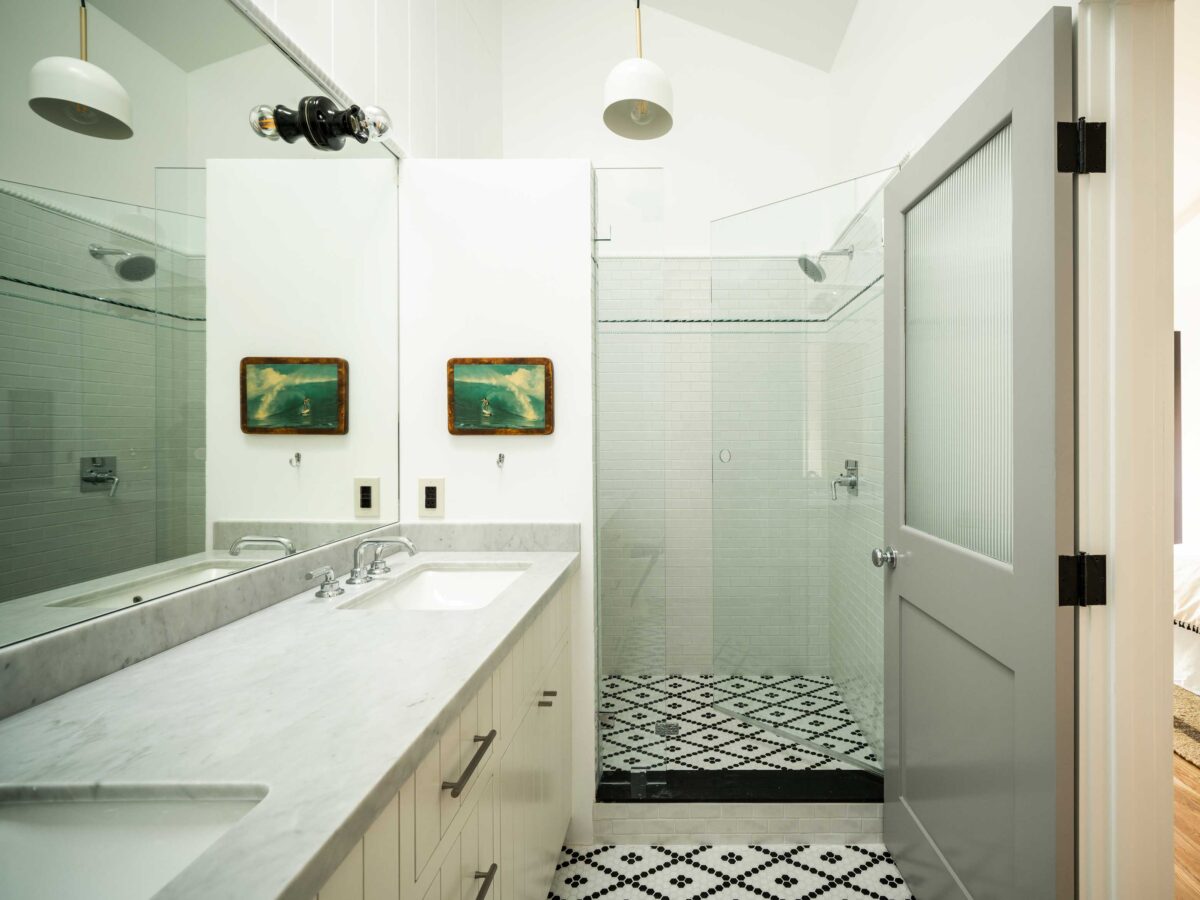
Gavin Cater
For this home, Jones used black and white tile in the bathroom. He also uses vintage pencil liner trim and white subway tile on the walls. However, to push the bathroom remodel into a vintage direction, he suggests vintage sconces.
2. Add a Little Personality
A brightly painted front door, hand-painted address plaque, or cool fence goes a long way to help your home stand out without, you know, standing out.
3. Even in Historical Homes, the Kitchen Will Need an Update
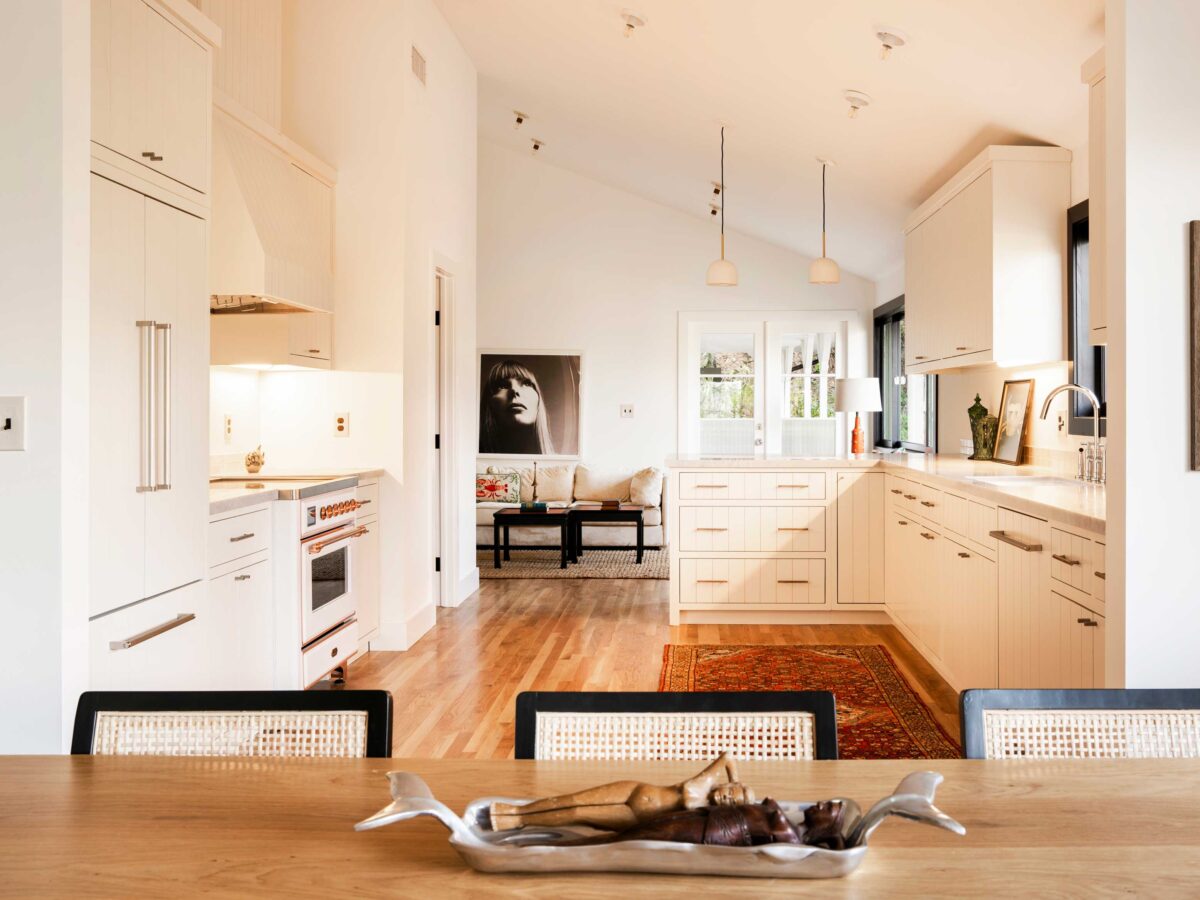
Gavin Cater
“Nobody wants a 1920s kitchen,” Jones says, “so I pay particular attention to the kitchens and the bathrooms.” One style choice: He tries to keep everything light and bright.
4. Vintage Furnishings Go a Long Way
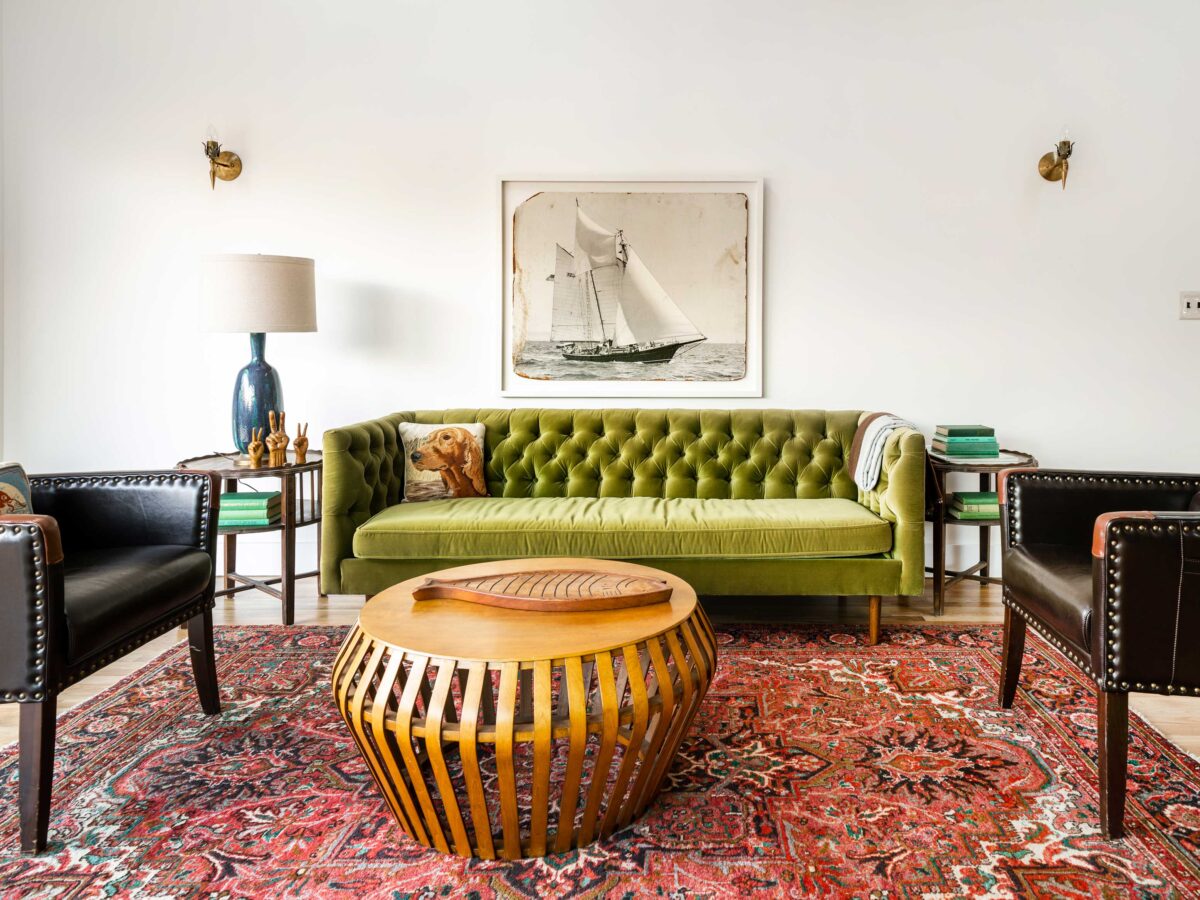
Gavin Cater
To get his furniture and décor, Jones goes to flea markets, swap meets, Etsy, and Pasadena Architectural Salvage. The look he puts together is eclectic but coordinated. Colors don’t clash. For example, he’ll use a bright green sofa, but pair it with subdued, vintage black leather chairs.
5. Decor and Styling Are Key

Gavin Cater
“I use vintage paintings, three-dimensional funny ashtrays in the shape of a foot—I’ll drill a hole in the back and hang it up on the wall,” Jones says. “That creates visual interest and raises the level of sophistication because you’re not working in flat artwork. You start popping in pieces of wood. And then it creates this whole next-level collage.”
6. Fixtures that Look Original Are a Must
To really make your home feel like it was slowly renovated, vintage sconces and light fixtures that match the time of construction can play nicely against the modern updates. For fixtures, check out Etsy or eBay.
7. Consider What a Home Is to You—And Use Restraint When Deciding What Stays and What Goes
“I like this idea of what we think of as a home,” Jones says. “For a lot of people, the conception of ‘home’ is rooted in the past. I’m not the modern box guy. I want someone to have the feeling that these homes weren’t really renovated, but they were gently cared for.”
Read the Current Issue Here!
Get one year of Sunset—and all kinds of bonuses—for just $29.95. Subscribe now!
